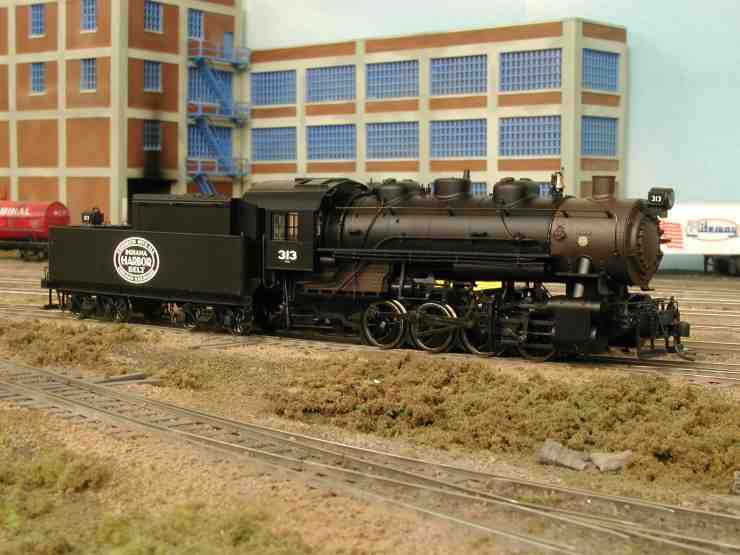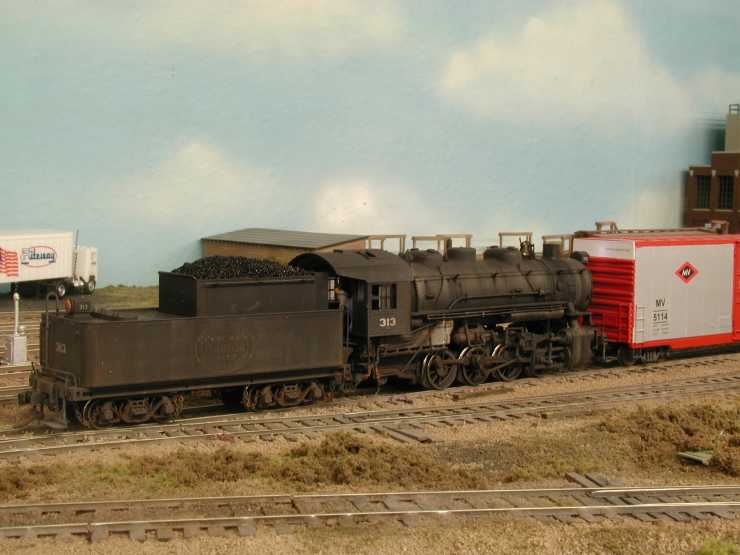WESTPORT TERMINAL RR |
BLT 2002 update Aug 2004 |
[How to scratch build turnouts] and [crossings] [Manual thrown Peco turnouts] [switch stands] [Movable magnets] [DCC] [beacon light] [CB&Q 173] [RS-1 and weathering] [tender pick up 0-8-0] [ Track Cleaning Transfer Caboose ] [ Signal Bridge ] [Operation] [Way of Hopper BN 25 3 84] [WT RR industries shipping & receiving] download Excel [carcards&waybills] 900kB [staging] [Harbor District] [Plywood District] [Third Street Industrial District] [track scale, structures] [Operating gates] [Waterfront Structures] [trestle] [Interchange Cars] [car exchange] [pass exchange] [electronic rail pass ] [ video ] |
Pick up for the P2K 0-8-0 tender
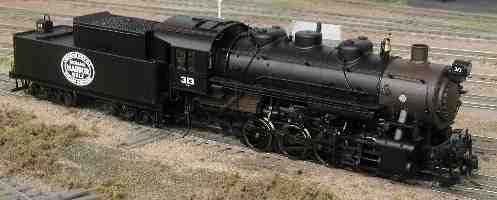
Westport Terminal RR has got a steam engine: Life Like's P2K 0-8-0. This engine should get a ESU Loksound2 decoder. At first I equipped the tender with electrical pick up. You will find more infos at Gerry Leone's site or from Gerry Hopkins.
I've used this method already with my commuter train cab car:
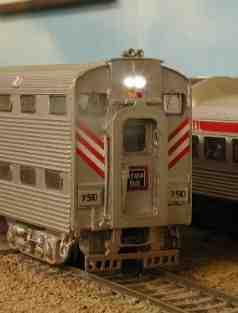
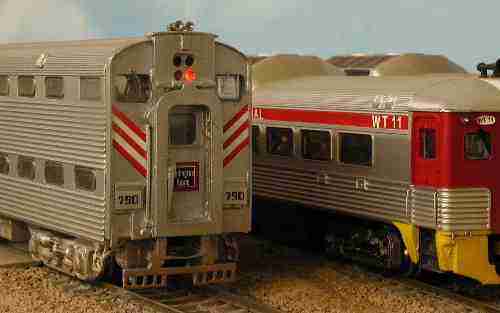
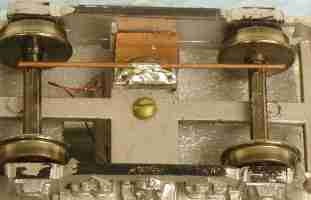
Tender
The first picture shows the wire. I used steel wire with 0,3mm (0.01'') diameter. You'll get it from Walthers. Piano wire or phosphore bronze wire will work too. I bent a loop which fits just into the hole, the truck has already.
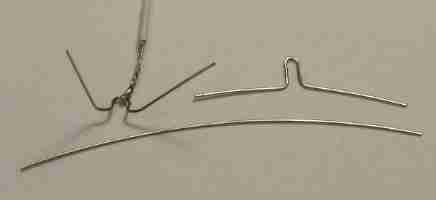
The upper wire is inserted and fixed with ACC. It's also bent so that the ends just touch the wheel flange. The lower wire is not yet installed.
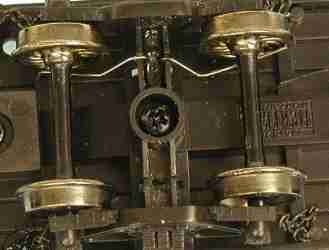
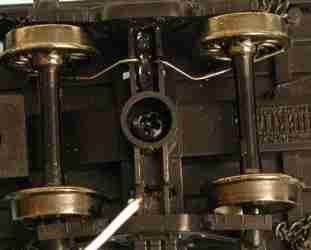
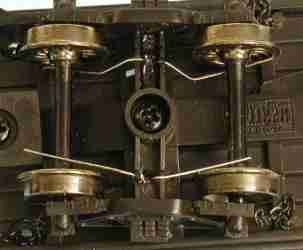
The speaker found its place where the coal pile used to be!
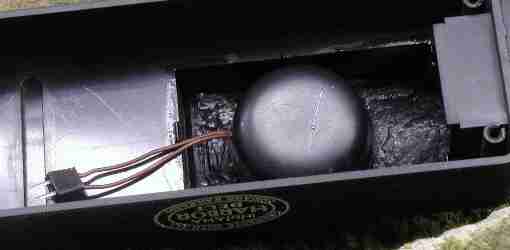
Here you see the wires from the trucks. The holes I made a little bit wider. I've removed from the weight the unused parts to make a better place for the decoder.
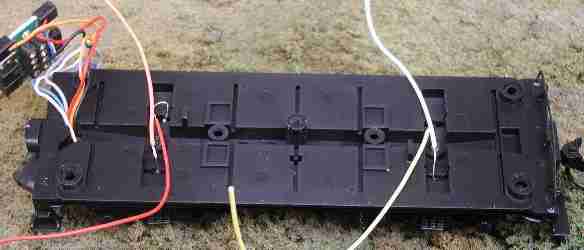
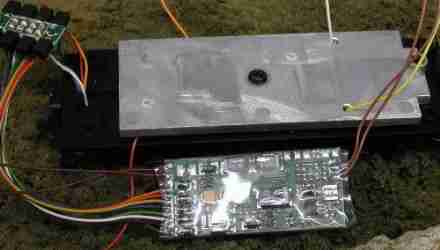
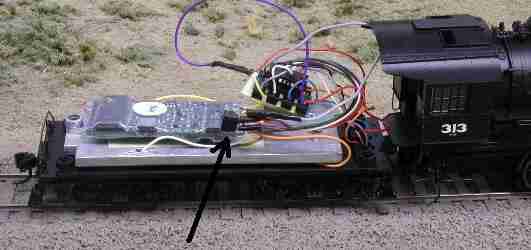 |
top |
There's room enough for the decoder. The arrow shows the little connector for the speaker. So you can remove the body for better working.
The switcher went into service!
But now I recognized: the tractive effort was too little! This engine needed lead.
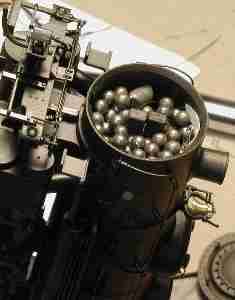
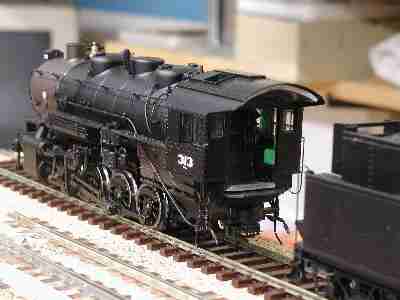
The boiler got bruised grain lead and the cabin got lead at the floor and under the cab roof.

Tractive Effort without additional lead: 0.39 Newton and with lead 0.49 Newton, 25% more!
This is not much. My Kato GP WT 512 has no additional weight and has a force of 0.76 N and the Kato switcher NW2 has 0.74 N.
With no grades traffic effort is no problem. So this switcher with sound is a pleasure first class to drive. You drive so slowly listening for the sound. And the engine look right. Peter "poured out his bucket with dirt over this engine". His words!
Still any questions? Write to Wolfgang Dudler
next top
| [How to scratch build turnouts] and [crossings] [Manual thrown Peco turnouts] [switch stands] [Movable magnets] [DCC] [beacon light] [CB&Q 173] [RS-1 and weathering] [tender pick up 0-8-0] [ Track Cleaning Transfer Caboose ] [ Signal Bridge ] [Operation] [Way of Hopper BN 25 3 84] [WT RR industries shipping & receiving] download Excel [carcards&waybills] 900kB [staging] [Harbor District] [Plywood District] [Third Street Industrial District] [track scale, structures] [Operating gates] [Waterfront Structures] [trestle] [Interchange Cars] [car exchange] [pass exchange] [electronic rail pass ] [ video ] |
